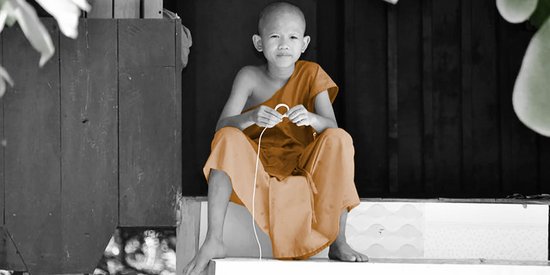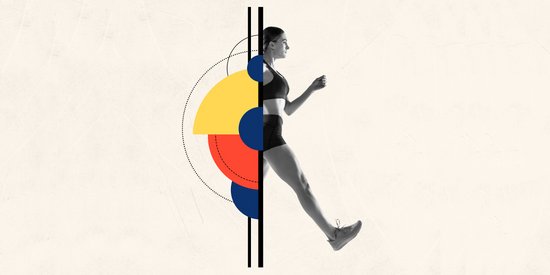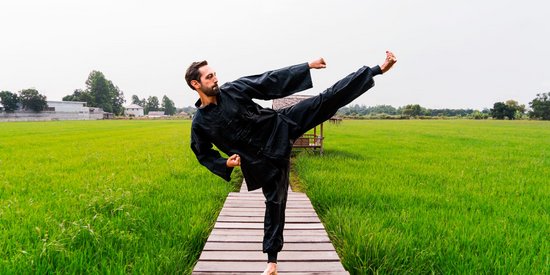Yoga is a science for all of humanity
Today, yoga is a common discipline which has travelled through the centuries to be known in our time as a practice for "well-being”. Did you know that the Buddha tried yoga before devoting himself to Buddhism? Let us share a little voyage back in time to go back to its origins. Yoga’s early roots lie back antiquity, somewhere between 3000 and 800 BCE. Little or no documents remain to pinpoint its exact date of birth. During this period in India, the principles of yoga were transmitted orally. Shiva, known as the "primordial yogi," shared his knowledge to the "Spatarishis;” or the seven sages. The seven forms of classical yoga were born through them.
Patanjali
Between the year 300 BC and 500 AD (exact date unknown), Patanjali, known as "the father of modern yoga," absorbed all the knowledge of this discipline. He noticed some possible confusing diversity for people on the general understanding and practice of yoga. So, he created the "Yoga sutras" whose eight pillars are:
Yama: Social Ethics, honesty, detachment.
Niyama: Personal Ethics, purification, maintenance of the body.
Asana: Postures
Pranayama: breath control, learning to control the fluctuations of the mind
Pratyahara: The ability to withdraw the use of the sensing organs, discipline of the senses to avoid distraction.
Dharana: Concentration, maintaining a stable mental state.
Dyana: Meditation, control of the senses and concentration.
Samadhi: The state of unity, the contemplation of being.
Thus were born the foundations of Ashtanga Yoga. The term "Sutra" means "thread". Patanjali described the "Yoga Sutras;" a kind of toolbox where each practitioner could draw the thread that best suited him according to his own knowledge and his own experience.
Over the course of the centuries, yoga has been gradually enriched under varied and diverse influences such as:
• 6th century with the appearance of Tantra.
• 10th century, Al-Biruni, a scholar of Persian origin, translated the 'yoga sutras' into Arabic, and wrote that yoga and Sufism were the same.
• 18th Century 1723-1721 several missionaries bring back engravings and information on yogis from India
• 19th century; In 1815 the first appearance of Sanskrit at the College of France.
• 20th century; much discussion on yoga and Buddhism. In 1902 comes the death of Vivekananda, an Indian scholar who through his lectures introduced yoga to the West. He said, "Yoga is a spiritual science that complements what the West produces in terms of the physical sciences."
• In 1924, Sri Tirumalai Krishnamacharya creates a school of Yoga that would become the school of Hatha yoga known in the West.
• From 1950 onwards Yoga associations, institutions and schools of yoga spring up around the world.
Nowadays, a multitude of different types of yoga exist and it is not always easy to choose which one may best suit us. Here is a summary table showing the different types of yoga. Practice of the eight pillars of ashtanga yoga:
The 8 pillars of ashtanga yoga:
• Insomnia, restless sleep (difficulty falling asleep, nocturnal awakenings): Yoga Nidra or Yogalates.
• Maintaining your energy balance (too much or not enough energy): Kundalini yoga or mantra yoga.
• Weight loss, need to exercise through exercises: Bikram yoga, Ashtanga yoga.
• Body-mind balance, spiritual evolution, meditation, self-knowledge and acceptance: Jnana yoga, Bhakti yoga, Kriya yoga, Yoga sivananda.
• Exercises for everyone: iyengar yoga and viniyoga.
• Yoga for special cases: Yoga for pregnant women, for children and seniors.
As is the case with any physical exercise, it is strongly recommended that you consult the advice of a doctor before commencing an activity.
India has seen the birth of great men like Gandhi and Krishnamurthy who were fervent practitioners of this discipline. Closer to home, Dr. Deepak Chopra integrates yoga, meditation and visualization in his Ayurvedic program for the fight against cancer, with positive results.
For a holistic approach for an individual, yoga adds a great complement to total therapy. It is great for keeping fit and gives excellent benefits when practised regularly.
Hatha yoga and ashtanga yoga:
Hatha Yoga is the form of Yoga most practiced throughout the world and comprises of a series of simple or more complex postures depending on the ability of the person. The postures are held for about three minutes to maximise the control of breathing and concentration.
Its benefits that regular practice can offer:
More flexibility, strengthening of the skeleton and an end to back pain, improved concentration and memory, sleep quality and decreased stress.
An ashtanga yoga session often begins with the chanting of a mantra in Sanskrit to open up and give intention to the session and to thank the teachers for sharing their experience. This is then followed by a sequence of postures, which are to be followed strictly. If for physical reasons the body is unable to perform one of these postures, the sequence will stop at that position. The same exercise will be repeated until the body is able to achieve this particular posture, whereupon the person can then move on to the next. Perseverance over a period of time can achieve: Flexibility, hormonal regulation, improved mobility of the joints, improved circulation, awareness of the body, self-confidence, emotional stability.
Working on the postures is just one part of Ashtanga yoga in which seven other factors (Patanjali, see the eight pillars of this practice above).
"Yoga is the cessation of the fluctuations of the mind."
Whatever Yoga is, it is primarily a discipline; a bodily, mental and spiritual transformation that operates in all areas of your life. Positive changes will be made in your life resulting from this practice.
Yoga is the perfect activity to stay in good physical condition for anyone who is in search of their inner nature ...
Most yoga practitioners and / or teachers adopt their lifestyle, especially from the point of view of food, it does not seem necessary to me to necessarily become a vegetarian!
The advice from Womensdestiny:
Various options are available to meet your needs. We suggest you opt for either a trial course or why not try a free course of initiation.
This will provide you with the opportunity to discover Yoga, meet the teachers and ask all your questions.









